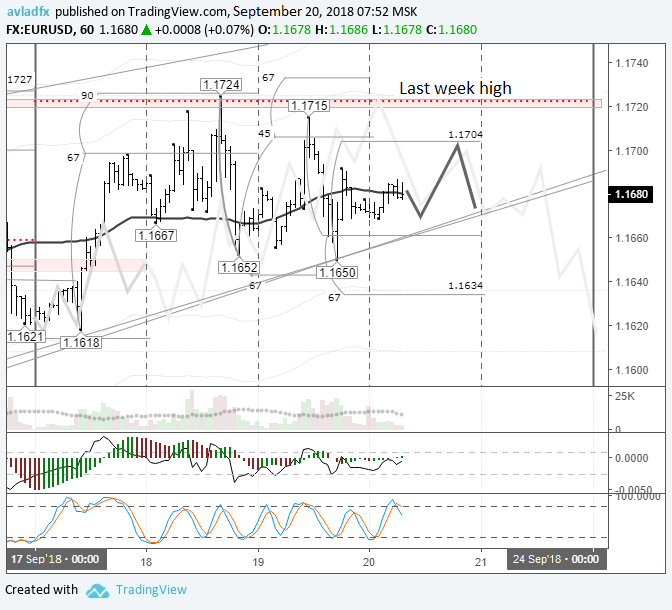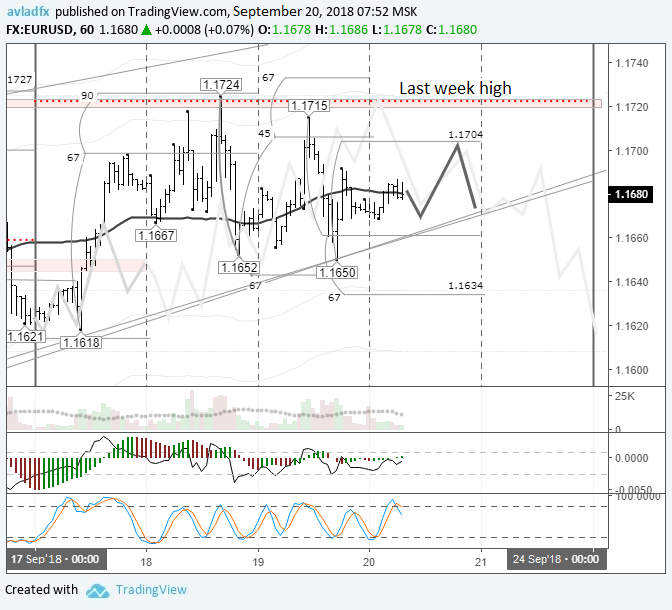Previous:
On Wednesday the 19th of September, trading on the euro closed slightly up. Throughout the day, the single currency lacked any pronounced direction. The main drivers behind yesterday’s movements came from news about Brexit, the US-China trade war, and delays to the NAFTA deal. The currency pair spent the day trading within a range of 1.1662 – 1.1715.
Day’s news (GMT+3):

Fig 1. EURUSD hourly chart.
Current situation:
The EURUSD pair is trading “with deviations”, but is trying to stick to my weekly forecast. I was expecting to see moderate growth to 1.1722 before Friday, and this price level was reached on Tuesday.
The Kiwi dollar surged after GDP data for Q2 showed the New Zealand economy growing at its fastest pace in 2 years.
According to my weekly forecast, we should currently be at 1.1722. At the time of writing, the euro is trading at 1.1683. I reckon that ahead of a decline, it would be good to see a pullback to 1.1704 in order to take up a short position. The wave structure of the emerging formation from 1.1722 (14th Sep) points to a decline for the euro. There’s no need to rush to open a short position at 1.1704, as the rate could rise as far as 1.1720.
In terms of today’s news, it’s worth keeping an eye on British retail sales data.











Leave A Comment